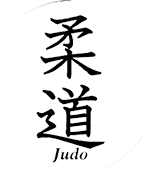Jonesy wrote:Sadly Shizuya Sato died in 2011, so you are reproducing something that is old.
The IJF is certainly NOT striving to maintain the true character of Kodokan Judo - and the All Japan Judo Fedration (not Association) is the IJF accredited NGB in Japan.
The Kodokan is walking a fine line between tradition and modern perspectives on judo. The Ura-waza kata have never been part of the Kodokan syllabus though.
For me, there is certainly room for the IMAF. Perhaps NBK who posts here can say more about what IMAF is up to judo wise these days.
Jonesy is correct - Sato Shizuya sensei died in 2011. He is missed. The meijin list should be updated to include him among so many others IMAF Meijin
After Sato sensei's death, a couple of folks pitched in at the US Embassy Judo Club to keep things going until a decision as to which direction. The Judo division had atrophied in the aftermath of the deaths of so many of its founding members - Mifune Sensei, Ito Kazuo sensei, etc. - as well as the essential disappearance of Mifune sensei's faction in the Kodokan - and some other politics. Also, it seems that in most countries the national governing bodies are now almost all-encompassing, given the modern realities of insurance, the limited availability of dojo outside of the approved NGB in many countries, etc., and there are more KDK seminars overseas. That was apparently not the case decades ago when IMAF was established, and there was a great hunger for its judo instruction. (CK writes of some of that)
IMAF continues to maintain the Nage and Katame no Ura Waza, the techniques explored by Mifune sensei and organized by Ito sensei. These aren't taught much outside Japan because you really need to understand the basic kata before tackling the ura waza, and that seems to be a mixed bag.
In Sato sensei's U.S. Embassy Tokyo dojo, we recruited a former All Japan Enterprise Judo champion, Natori Hiroto sensei, KDK 6dan, who also formerly taught in Colorado. He has a strong competition focus that was very welcome with a number of members who happened to be college wrestlers (as much younger men). But there continues a strong focus on basics, techniques, and the appropriate kata, rather than competition for the sake of points and promotion; despite the interest in randori and newaza, we got 7 adults with zero background in judo through KDK shodan promotion, and they all did very well in their kata demonstrations. Most of the former wrestlers are moving away soon, and Natori sensei is grumbling about retiring, so I predict the training will settle down back into the more normal IMAF structure.
One of the regular highlights of training is instruction by Sato Tadayuki sensei (no relation to Sato Shizuya sensei), shihan of the Waseda Univ. aikido club and a key member of Shodokan Aikido, and a remarkable judoka. For several months we have explored the origins and applications of koshiki no kata techniques, and it has been some of the most interesting martial arts training I have ever seen. He apparently reads old martial arts texts voraciously, and has drawn out the koryu jujutsu roots of many techniques and can track them through various schools and eras, and we do so during the training. Fascinating stuff.
The fall IMAF Europe seminar is in Budapest, Hungary, but there will be no judo instruction, rather Nihon-den Jujutsu (plus iaido, aikido, karatedo).
Regarding the Ura Waza not being part of the Kodokan, someone said something interesting, in that Uemura kancho has a very different view towards some of the typical lack of action on the part of the Kodokan. The upshot was that some might imagine that certain kata show back up in the KDK - there have been demos of kime shiki etc recently if the story I heard was correct.
NBK


